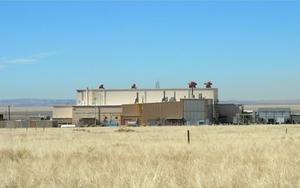Nuclear infrastructureSandia Labs refurbishes nuclear security infrastructure
Sandia National Laboratories has completed $199 million in facilities construction and repair as part of an 11-year national effort to revitalize the physical infrastructure of nuclear security enterprise sites. The work is part of a program established in 2001 to reduce a long-standing backlog of deferred maintenance at the National Nuclear Security Administration’s (NNSA) eight sites, including Sandia.

The Nuclear Energy Systems Lab at Sandia National Laboratories // Source: sandia.gov
Sandia National Laboratories has completed $199 million in facilities construction and repair as part of an 11-year national effort to revitalize the physical infrastructure of nuclear security enterprise sites.
The Facilities and Infrastructure Recapitalization Program (FIRP) was established in 2001 to reduce a long-standing backlog of deferred maintenance at the National Nuclear Security Administration’s (NNSA) eight sites, including Sandia. Some $1.9 billion was spent over eleven years on 900 design, construction, and repair projects. The program goals were accomplished one year early.
“The NNSA created the program to make its sites leaner, more energy efficient and to ensure the vitality and readiness of its nuclear security enterprise,” said Dawn Harder, Sandia Field Office FIRP program manager.
“A primary goal was to help restore, rebuild and revitalize the facilities and infrastructure at Sandia through the elimination of legacy deferred maintenance and excess space.”
A Sandia Lab release reports that the FIRP came about after the Department of Energy (DOE) and NNSA found significant deterioration of facilities that house activities of the Science Based Stockpile Stewardship Program. The FIRP was supported by DOE, Department of Defense, outside stakeholders, Congress, and NNSA. The goal was to reduce a $2 billion maintenance and repair backlog and restore facility conditions to an acceptable level through recapitalization, restoration and modernization.
At Sandia’s three major sites in Albuquerque; Livermore, California; and Tonopah, Nevada, the program eliminated $142 million in deferred maintenance and 510,000 square feet of noncontaminated excess space. Sandia completed 56 recapitalization projects costing $100 million; twenty-one disposition projects, at $29 million; two major utility line-item projects, $62 million; and eighteen infrastructure planning initiatives, $8 million.
“The FIRP has been a cornerstone for Sandia’s efforts to achieve and efficiently maintain its facilities in a condition ‘fit for mission use,’” said Art Ratzel, director of Sandia’s Facilities Management and Operations Center. “Its performance exceeded our expectations through NNSA’s strong commitment and the tremendous efforts of Field Office and Facilities Management staffs in making FIRP an unqualified success.”
NNSA’s efforts to improve its infrastructure are not ending. NNSA will continue to address old deferred maintenance needs where appropriate and establish new, modern capabilities needed to support the advances in stockpile stewardship and other program drivers that will replace outdated and obsolete capabilities.
